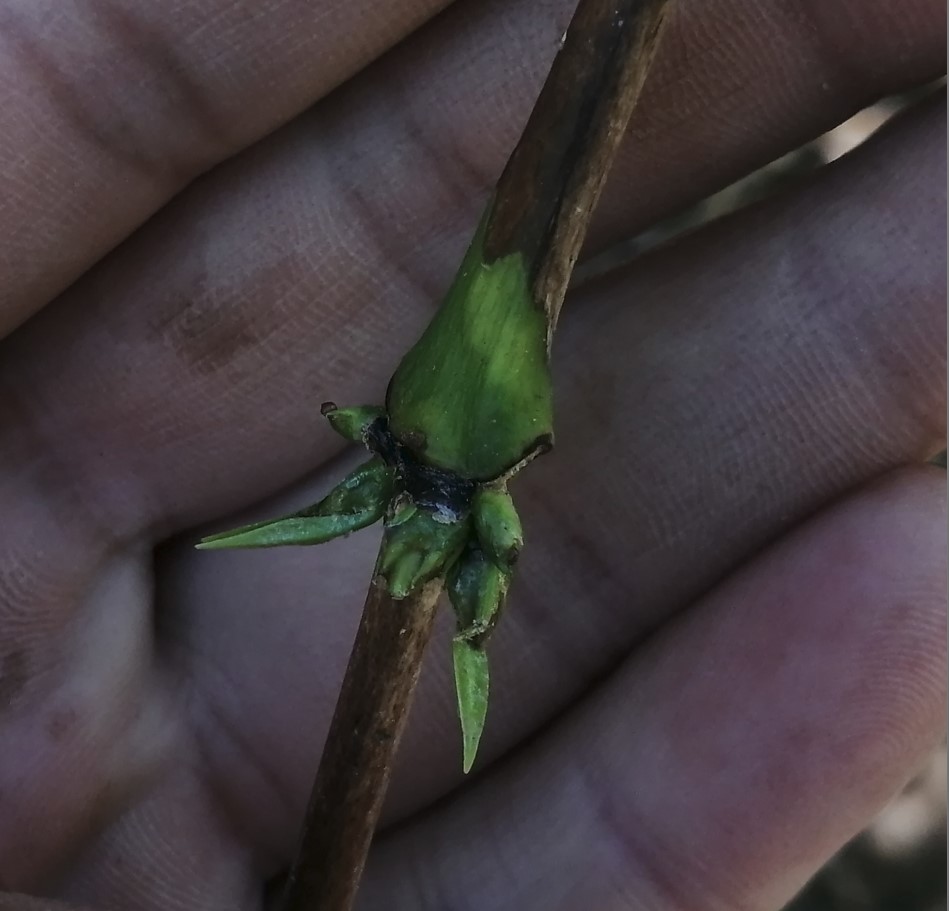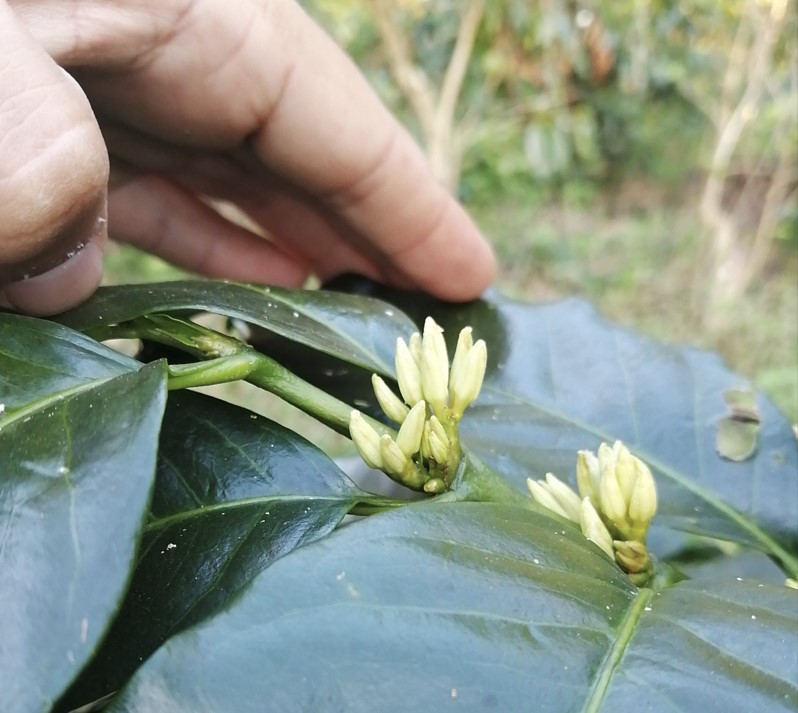Coffee Tree Flowering and Pollination

This post is also available in:
This post is also available in:
![]() Français (French)
Français (French) ![]() العربية (Arabic)
العربية (Arabic) ![]() Português (Portuguese (Brazil))
Português (Portuguese (Brazil))
Coffee plants are self-pollinating as their flowers are hermaphrodites. They don’t require another coffee plant to produce their fruit. This single fact might account for there not being an exact register of the role and importance of cross-pollination in this crop. Some degree of cross-pollination does exist, as coffee bushes do have a flower that produces nectar and pollen. Insects, gravity, and wind must certainly play a role in pollination.
It’s also important to bear in mind that the flowering anthesis period is quite short, lasting about three days. It is said that the flowers’ fresh aroma is only attractive to bees on the first day.
| Flower bud development | |
| 1. | Induction period: lasts approximately one whole day (13.5 h) |
| 2. | Growth and development of flower buds (about 45 days): slowly they grow until they reach a 5mm length. |
| 3. | Latency: they stop growing and go into a rest period. |
| 4. | Pre-anthesis: A change in temperature breaks the latency and the flowers start to mature. This might take between 20 to 30 days. |
| 5. | Anthesis: flowers open. This lasts only 3 days. |
*It is said that 10 mm of rain or watering is enough to start the flower bud development.

Induction period flower buds

Growth and development of flower buds

The latency period of flower buds

Pre-anthesis (Latency breakup)

Anthesis (flowering)
ANACAFE Guatemala states that in Coffea Arabica[1] the effectiveness of self-fertilization ranges from 91 to 96%. So, it is important to figure out if the remaining 4 to 9% accredited to cross-pollination makes some kind of difference. The few studies and observations that have been done about cross-pollination, have shown that this type of fertilization improves the number of berries, as well as the size of the coffee beans which in addition register a superior concentration of sugars which later will translate into a better cup flavor. As we promote the practice of agroforestry, farmers will play a key role in observing how biodiversity helps in the development of their plantations.
References
Smithsonian’s National Zoo & Conservation Institute, Ecological Benefits of Shade-Grown Coffee. https://nationalzoo.si.edu/migratory-birds/ecological-benefits-shade-grown-coffee
All About Coffee by William H. Ukers, 1935, Chapter XV: The botany of the Coffee Plant. P. 122-145 https://www.cluesheet.com/All-About-Coffee-XV.htm
Polinización del Café por Apis Mellifera L. y Otros Insectos en Costa Rica, F. Bobadilla, W. Ramírez B., 1991, Turrialba Vol. 41, No. 3, P.285-288 https://repositorio.catie.ac.cr/bitstream/handle/11554/10147/A0790e03-03.pdf?sequence=1&isAllowed=y
La Apicultura y el Café, una Combinación para Reducir los Efectos del Cambio Climático en la Región, Instituto Interamericano de Cooperación para la Agricultura IICA, Costa Rica. https://www.iica.int/es/prensa/noticias/la-apicultura-y-el-cafe-una-combinacion-estrategica-para-reducir-los-efectos-del
Guía Técnica de Caficultura, ANCAFÉ 2018, P.21.
Coffee plant History and general Information
Coffee Plant Information – Morphology
Coffee Genetics and Variety Selection
How to Select, and Treat Coffee Seeds
Germination of Coffee Seeds and Creation of Seedbeds for Planting
Coffee Trees Planting and Plant Spacing
How to Prune your Coffee Trees in an Agroforestry System
Shade-Grown Coffee in an Agroforestry System
Coffee Tree Flowering and Pollination
From Rainwater Harvesting to Irrigation of Coffee Trees
Coffee Tree Fertilization Requirements
Weed Management in a Coffee Plantation









































































